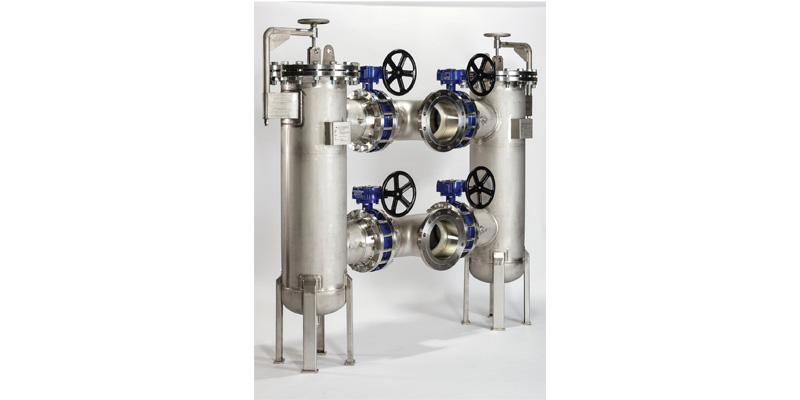
14 February 2025 | PoreFiltration
Protecting equipment and remove unwanted debris from fluids
Strainers are widely used in industrial and commercial applications to protect equipment and remove unwanted debris from fluids.
The choice of a strainer type depends on the specific application, fluid properties, and operational requirements. Here’s an overview of the main types of strainers and their advantages:
1. Y-Strainers
These strainers have a Y-shaped body and are typically installed in pipelines to filter out debris. They can be used in horizontal or vertical orientations.
Y-strainers are compact and versatile, featuring a Y-shaped body that can be installed in horizontal or vertical pipelines. They are cost-effective and easy to maintain, often equipped with a blow-down port for quick flushing. These strainers are suitable for both liquids and gases and are commonly used in low to moderate flow rate systems, including steam applications and general-purpose filtration tasks.
2. Basket Strainers
These strainers have a larger, basket-shaped mesh filter that collects debris. Available as simplex or duplex configurations.
Basket strainers offer a larger debris-holding capacity due to their basket-shaped mesh filter. This design results in a lower pressure drop compared to Y-strainers, making them ideal for applications requiring higher flow rates or heavy-duty filtration. They are easy to clean, as the baskets can be removed and serviced, and duplex configurations allow continuous operation during maintenance by switching between two baskets. Basket strainers are commonly used in water treatment, fuel systems, and large pipeline applications.
3. T-Strainers
Similar to basket strainers but shaped like a "T." Used for inline filtration in pipelines.
T-strainers, shaped like a "T," are similar to basket strainers but cater to high-capacity systems. They provide robust construction suitable for demanding environments with high pressures and temperatures. Offering customizable filtration levels through various mesh sizes, they are often used in industries like oil and gas, power generation, and petrochemical processes.
4. Duplex Strainers
These consist of two strainer baskets in parallel, allowing one to operate while the other is cleaned.
For critical applications requiring uninterrupted flow, duplex strainers are an excellent choice. These systems feature two strainer baskets in parallel, allowing one to remain operational while the other is cleaned. This design minimizes downtime and ensures high efficiency, making duplex strainers a popular choice in chemical processing, food and beverage production, and pharmaceutical applications.
5. Automatic (Self-Cleaning) Strainers
These strainers automatically clean themselves by backwashing or scraping debris off the filter element.
In situations with high debris loads or where frequent cleaning would be disruptive, automatic (self-cleaning) strainers provide a highly efficient solution. These strainers automatically clean themselves through backwashing or scraping, reducing maintenance costs and maintaining consistent flow and pressure. They are particularly suited for cooling towers, seawater filtration, and wastewater systems, where debris loads are significant.
6. Wedge Wire Strainers
Made from wedge-shaped wire, these strainers offer precise filtration and are highly durable.
Wedge wire strainers, are known for their strength and precision. Constructed from wedge-shaped wire, these strainers are resistant to clogging and wear, making them ideal for high-pressure and high-temperature applications. Their customizable designs cater to specific requirements in industries such as oil and gas and pulp and paper manufacturing.
How to Choose the Right Strainer?
• Fluid Properties: Consider the viscosity, temperature, and type of fluid (e.g., liquid, gas, steam).
• Debris Load: Choose a strainer with adequate debris-holding capacity for your system.
• Flow Rate: Ensure the strainer can handle the required flow rate without excessive pressure drop.
• Maintenance Requirements: For systems requiring minimal downtime, self-cleaning or duplex strainers may be ideal.
• Space Constraints: Compact options like Y-strainers work well in tight spaces.
• Budget: Factor in initial cost, maintenance costs, and operational efficiency.
If you need help matching a specific strainer to an application, feel free to share more details!